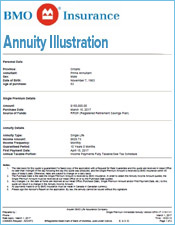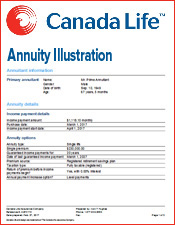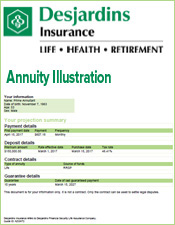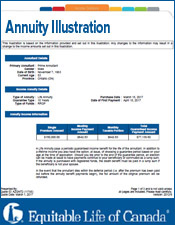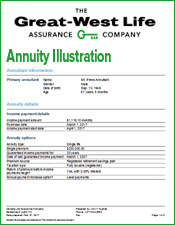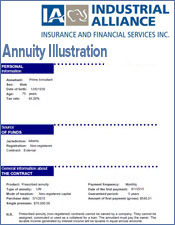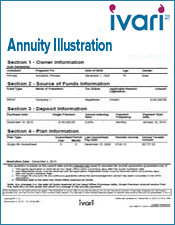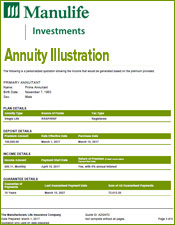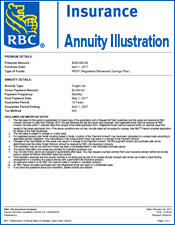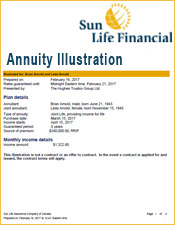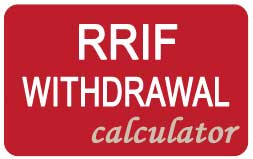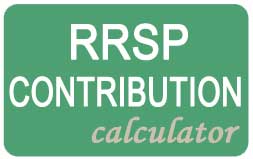Types of Pension Plans in Canada

Introduction
When it comes to the pension arrangements available to most people in Canada, you have three main options to consider. These are the defined benefit pension plan, the defined contribution pension plan, and the group registered retirement savings plan.
We’ve gone through these options below where we’ve described what each pension plan does. There you’ll also find examples of how these plans work when put into action as well as detailed pros and cons lists so that you can compare each plan and decide which one is the best for you. Take a look at them all below.
Important Details
It’s important to have an employer pension plan if you can since it’s very beneficial for your retirement. It makes saving for retirement much easier by setting aside part of your income, as well as a contribution from your employer themselves, to put into your retirement plan. If you find it difficult to save money when it’s in your hands, pension contributions can be handy since the money is put towards your retirement before you can touch it. The amount of employer contribution depends on your salary but can be quite substantial with the right income and the right plan, sometimes being as high as 15% to 18% of your salary.
Not all pensions are made equal and you’ll see that retirement gets paid out in different ways once you exit the workforce. Sometimes a plan will require you to pass a certain age to ensure that it’s used at the average person’s time of retirement, whereas others allow you to access the money earlier. Keeping the flexibility of your pension in mind is important, especially if you have alternative retirement goals that could involve an early retirement.
Many pensions have benefits attached, too, so you can still be covered with travel, health, or life insurance benefits once you have retired. This is most popular in defined benefit pensions, as you’ll see below.
Defined Benefit Pension Plan
The defined benefit pension plan is one of the most common pension types that we have in Canada, so this will be the standard among much of the Canadian workforce. That said, the prevalence of these plans has been steadily declining for the last few decades as they’re not the most charitable pension scheme for employers.
Defined benefit pension plans, or DBPPs, are transparent in that you can use a formula to calculate the pension you’ll receive. That formula will usually include your years of service, which is the number of years you’ll be working for the company. They’ll also take into account your average salary, which can be calculated in different ways, from the lifetime average of your salaries, your last five salaries, or the best five salaries you’ve had if the scheme is a charitable one. Then there’ll be a percentage multiplier applied to the formula, usually a lower, single-digit percentage like 1.5% upwards, to calculate the yearly allowance of your retirement.
Here's an example formula to help you understand. Let’s say you’ve worked under your retirement plan for 25 years, your five best salaries average out to $50,000, and your pension has a multiplier at 2%. At 2%, you should expect to receive 2% of 50,000 multiplied by the 25 years of service.
0.02 x $50,000 = $1,000
$1,000 x 25 = $25,000 per year once your retirement plan has been put into action.
With DBPPs, it’s a team of managers that handle the day-to-day decisions. This can be beneficial for those who are too busy or inexperienced to manage their own portfolio. Based on your age and service, there is usually a set date that is the earliest at which you can retire, though a reduced pension can be available before then. Retiring before your date is more difficult, so this isn’t the best plan for those looking for early retirement.
Pros:
- A guarantee of a pension once your work is done.
- A set formula that you can use to calculate what your pension outcomes will look like.
- Options exist to protect your pension against inflation.
- Spouses and dependents can receive a reduced pension in the event of your death.
- There’s no investment risk.
- Beneficial for couples thanks to pension income splitting.
- Can come with health, travel, or life insurance benefits.
Cons:
- You have little control over the investments made.
- More difficult to leave your employer.
- Can be expensive to maintain and risky for your employer.
- Some plans lack inflation protection.
- Difficult to retire early.
- Counterparty risk if the pension doesn’t have enough funding.
Defined Contribution Pension Plan
Defined contribution pension plans, or DCPPs, work exactly as they sound. If a defined benefit pension plan allows you to know the eventual figure you can receive upon your retirement, a defined contribution pension plan is one that instead lets you know how much you are contributing to it but not how much you’ll receive upon retirement.
The contributions will be an agreement between you and your employer on which percentage of your income is set aside for the pension plan on a monthly basis. Sometimes this can be a fixed dollar amount per year, too, and it’s also possible to get a match from your employer.
With DCPPs, the amount you will receive is dependent on how your investments perform, which then depends on the investments you have chosen. Essentially, with DCPPs, the investment risk is transferred from the company and to the employee. The contributions themselves are based on a percentage of your income, usually, the base income but the inclusion of bonus income is possible too.
DCPP matching can look like this: Your employer’s contribution will match 100% of your contribution from 0% to 3%. Your employer’s contribution will be at a base of 3% plus 75% match up to 3% of the employee’s contributions between 0% to 8%. Your employer’s contribution could also be a 4% base plus a 50% match up to 4% with employee’s contributions ranging from 0% to 8%.
There’s an RRSP limit of 18% of employment income towards your pension, too, so it’ll never exceed this amount. Pension adjustments occur when contributions are made, decreasing the RRSP contribution for the next year.
Pros:
- You have full control over your investments.
- More flexibility when withdrawing from retirement funds.
- Easier to leave your employer.
- Easier to manage income if qualifying for GIS benefits.
- Easy to understand how much you have in your retirement.
Cons:
- 100% of the investment risk lies with the individual.
- Investment decisions are made by yourself.
- It’s not protected by inflation.
- You could outlive your pension.
Group Registered Retirement Savings Plan
Group Registered Retirement Savings Plans, or just group RRSPs, operate much like defined contribution pension plans with some subtle differences. The employer may offer a match of the employees’ contributions at a certain rate when you have a group RRSP. However, unlike a DCPP, you have more flexibility in the amount and time of pension withdrawals.
Having a group RRSP doesn’t preclude you from having an individual RRSP as long as you’re not surpassing the 18% income contribution limit. The limit is based on your last year’s income and should be found on your Notice of Assessment. This limit is total for all RRSPs, so your personal and group RRSPs should be added up if you have both so that you don’t go over that limit and incur some penalties as a result.
You’ll have options in your RRSP, you could have a DCPP suggested, for example, but it’s up to you how you’ll invest the savings you accrue.
Pros:
- Keep full control over investments.
- Very flexible with how much and when you can make withdrawals.
- Easy to leave your employer.
- Easier to manage your income when qualifying for GIS benefits.
Cons:
- 100% of the risk lies with the individual.
- Investment decisions are made by yourself.
- Not protected against inflation.
- You may outlive your pension.
Conclusion
You should choose a pension that works best for you, often by netting you the largest retirement fund whilst being convenient for you to work under. Since pensions work over such a long period of time, very slight differences like inflation protection in your DBPPs can change your retirement outcomes in a drastic way. Likewise, investment fees accrued for DCPPs and group RRSPs may also decrease the total possible savings you’ve been keeping till retirement.
You should keep in mind that every pension plan, even within the three types listed above, can have slight variations in how they work. Because of this, you should always get to know the specific retirement plan that you’re going for and, if possible, get the advice of an accountant or financial advisor.
As you have seen, each pension type has its pros and cons that need to be weighed against one another when making your decision. Different plans are more compatible with different financial goals, so how your pension plan fits into your future plans depends on where you see yourself in your golden years.




